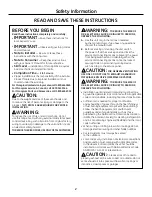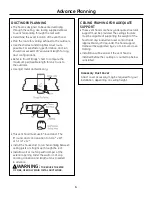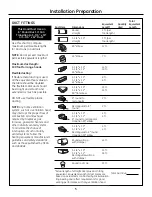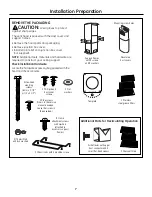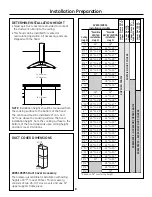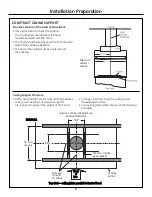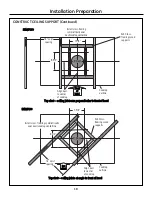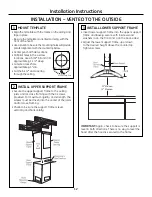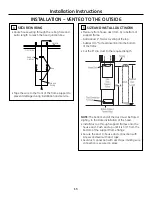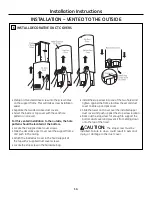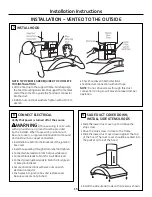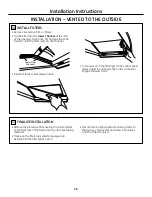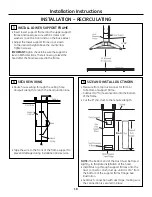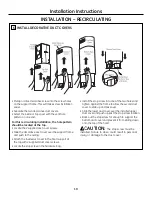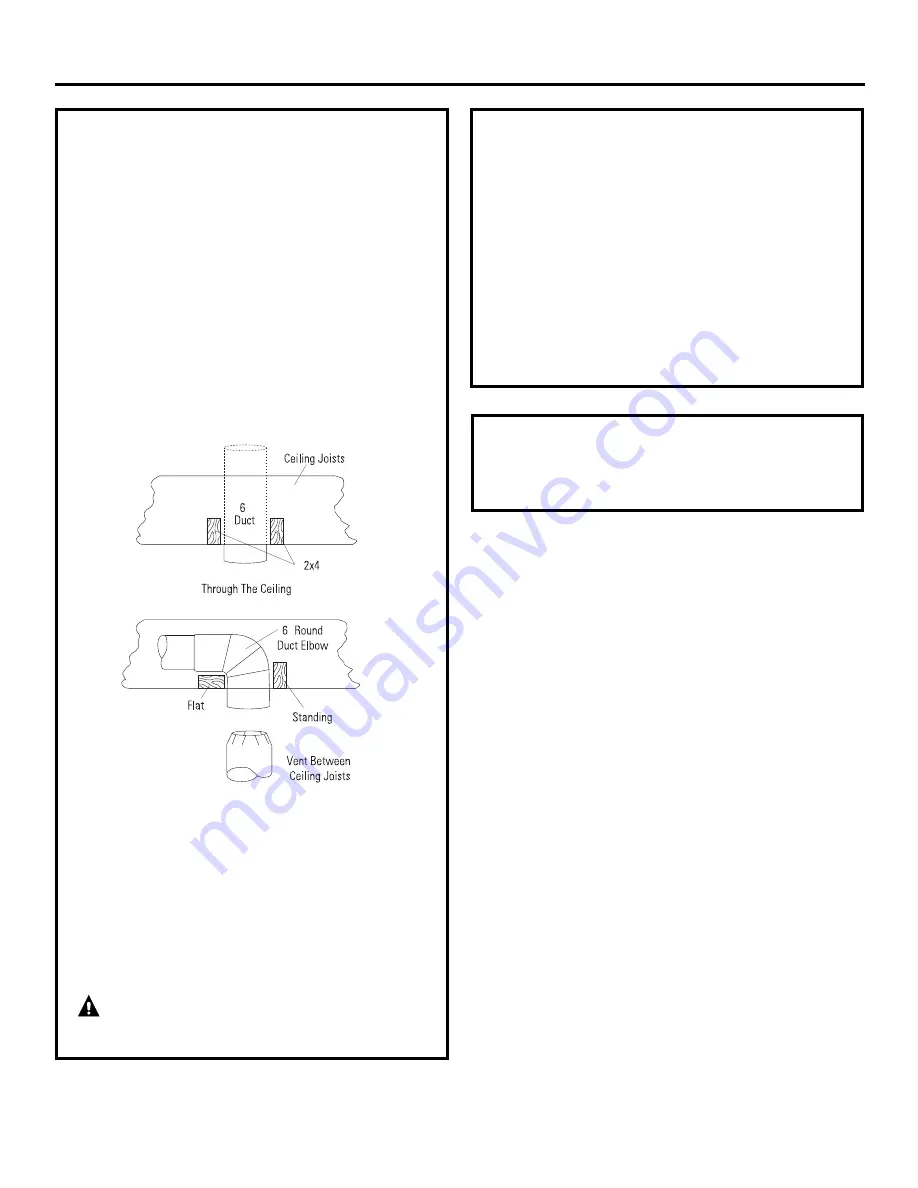
Advance Planning
DUCTWORK PLANNING
•The hood is designed to be vented vertically
through the ceiling. Use locally supplied elbows
to vent horizontally through the rear wall.
•Determine the exact location of the vent hood.
•Plan the route for venting exhaust to the outdoors.
•Use the shortest and straightest duct route
possible. For satisfactory performance, duct run
should not exceed 100
′
equivalent length for any
duct configurations.
•Refer to “Duct Fittings” chart to compute the
maximum permissible length for duct runs to
the outdoors.
•Use rigid metal ductwork only.
•This vent hood must use 6
″
round duct. The
6
″
round duct can transition to 3-1/4
″
x 10
″
or 3-1/4
″
x 12
″
.
•Install the house duct to run horizontally between
ceiling joists or straight up through the roof.
•Install a wall or roof cap with damper at the
exterior opening. Order the wall or roof cap
and any transition and length of duct needed
in advance.
WARNING:
TO REDUCE THE RISK
OF FIRE, USE ONLY RIGID METAL DUCTWORK.
CEILING FRAMING FOR ADEQUATE
SUPPORT
•These vent hoods are heavy. Adequate structural
support must be provided. The ceiling structure
must be capable of supporting the weight of the
hood and any inadvertent user contact loads
(approximately 200 pounds). The hood support
frame will be supported by 2 x 4 minimum cross-
framing.
•Installation will be easier if the vent hood is
installed before the cooktop or countertop below
is installed.
4
Accessory Duct Cover
A duct cover accessory may be required for your
installation, depending on ceiling height.
″
″
Summary of Contents for ZV850
Page 42: ...Notes 42 ...
Page 63: ...63 Notas ...


